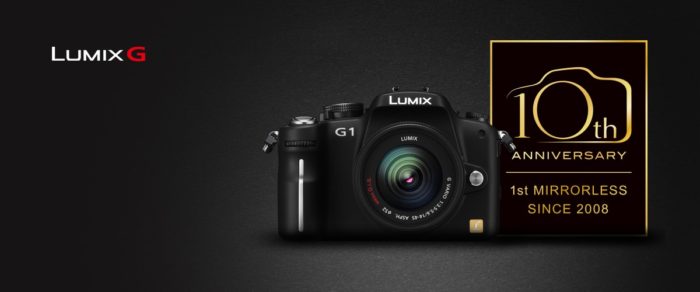Tony Northrup believes Panasonic should give up MFT
Uhhh I see a shitstorm coming in the comment system…going to prepare some pop-corns :)
No seriously, try to not become a fanboy and eventually prepare some rationale counter arguments. Thanks!
Uhhh I see a shitstorm coming in the comment system…going to prepare some pop-corns :)
No seriously, try to not become a fanboy and eventually prepare some rationale counter arguments. Thanks!
Blackmagic Pocket 4K ISO Test vs Panasonic GH5
Panasonic Leica 10-25mm F1.7, The Best Travel/Vlog/Youtube Lens? It will Replace 5 Lenses In my Kit! (Victor Bart).
Wow! Zenit and Leica Present Joint Production Camera! (MirrorlessRumors).
Has full-frame finally killed off smaller-sensor cameras? (TechRadar).
Panasonic 10-25mm f/1.7 Lens Hands-on Photos (Photographyblog).
The Smallest Carbon Fiber Tripod: Gitzo Mini Traveler (Explora).
Share your best pictures on our new Instagram MicroFourThirdsGallery.
Plenty of news on the facebook E-M1II group, Panasonic FF and the GH5 group.
Click on image to enlarge
Olympus released some new financial documents including a new imaging division strategy document.
They expect sales to drop further but they plan to improve the profitability with the following steps:
– Expand sales of highly-profitable OM-D series cameras and PRO series lensesMirrorless camera system that are uniquely Olympus, attaining high level of compatibility betweenoverwhelmingly compact & lightweight and high image quality with the Micro Four Thirds Standard– Accelerate development of products aimed for professional and high-level amateur users– Improve manufacturing cost ratio by consolidation of manufacturing facilities and improvedefficiency in manufacturing startups
What do you think?
–
Thanks EdinaMNguy!
There is a new Olympus Cachback promotion. You can read all details on those special pages at Amazon Germany, Amazon UK,

Full European countries info here: promotion.olympus.eu
Til October 4 you get the new Aurora HDR 2019 Pre-Order with a $10 discount (Click here). Customers can place their orders for both Windows and Mac versions of the software. All the information on what’s included can be found below.
About Aurora HDR 2019:
Skylum’s Quantum HDR Engine harnesses the power of AI for a more streamlined editing experience than ever before. It reduces burned-out colors, loss of contrast, noise and unnatural lighting caused by halos and unstable deghosting.
The Quantum HDR Engine has taken three years to create within Skylum’s AI lab, and contains the vast knowledge of the development team paired with artificial intelligence to bring you seamless HDR editing, be it with a single image or multiple bracketed shots.
Skylum’s developers tested thousands of bracketed shots through a neural network, and used the results to develop the technology needed for creating incredible HDR photographs – whether it’s real estate, landscape, cityscape or any other type of HDR photography.
Here are the most essential changes:
New Quantum HDR Engine
LUTs support with 11 New Integrated LUTs
Photoshop plugins support
New HDR Smart Structure filter for realistic and artefact-free structure (can be found in the new HDR Enhance filter)
Presets are now called ‘Aurora HDR Looks’
Improved Adjustable Gradient filter with new sliders for Shadows and Highlights added
Improved HDR Details Boost Effect ( the photo is shown in high-resolution while fine-tuning the filter)
Offer Availability:
Aurora HDR 2019 is available for pre-order on September, 12, and released on October, 4.
Pre-Order Pricing:
Current users may upgrade at a price of $49 USD ($59 USD MSRP)
New users can purchase Aurora HDR 2019 at a price of $89 USD ($99 MSRP)
Pre-Order Bonuses:
Video Tutorial: Getting the Most from Aurora HDR 2019 by Trey Ratcliff
Landscape Photography Handbook by David Johnston
Burning Moods LUTs by Richard Harrington
Exclusive interior Aurora Looks by Richard Harrington
3-month 500px Pro membership
$300 USD OFF a multi-day Iceland Photo Tours
Your Aurora HDR 2019 Pre-Order Page text link: https://macphun.evyy.net/c/60087/513351/3255
Cinema5D interviewed a Panasonic manager and she spilled out one info about the new 10-25mm f/1.7 lens. She said it’s not going to be on market by early 2019. I think that Panasonic will announce the official pricing and shipment start at next Photokina in May only.

Well Happy Birthday Panasonic! Here is the official press text:
–
Breaking Technological Frontiers: Panasonic Celebrates Ten Years of LUMIX G
25th September 2018 – Panasonic is proud to celebrate ten years since it introduced the world’s first Mirrorless Camera.[i] Revolutionising the world of photography, mirrorless cameras combine compactness with ease of use and outstanding performance. The biggest difference between mirrorless and DSLR cameras is the lack of mirror box and pentaprism, and the inclusion of an electronic rather than optical viewfinder. This enables mirrorless cameras to have smaller, lighter bodies and more compact lenses, as well as providing a real Live-View without a time-lag. This assists you to compose the perfect shot, even before you take it, making it the perfect travel companion for photographers of every level of experience.
“As an inventor of mirrorless cameras, we have developed unique technologies to achieve high picture quality, high-speed performance, mobility, and professional-level video as core competencies. This also includes optical technology, with the close cooperation of leading technology partners and a long-term collaboration with Leica camera AG, to bring to market the Dual Image Stabilizer, and Digital Processing by Venus Engine to realise high picture quality.”
Yosuke Yamane, Director of the Imaging Network Business Division at Panasonic
Panasonic transformed the very idea of photography with LUMIX G, expanding the capabilities of a traditional digital camera to not only be more compact but also include the Micro Four Thirds philosophy of creating a truly and completely digital system. This paved the way to the ultimate hybrid camera in the form of the GH5S, which achieves the highest video performance in LUMIX history and great low light capabilities. The LUMIX DMC-G1 was launched in 2008 and in the years since, Panasonic has continued to commit to being first to market with outstanding technological innovations such as the world’s first mirrorless 4K video recording[ii] and 6K PHOTO[iii].
The last ten years of LUMIX G stand out in the long history of camera development, where Panasonic’s technologies have made paradigm changes to the industry. In fact, since 2008 the digital camera technology evolution has been tremendously accelerated with established camera manufacturers following Panasonic’s path to true digitalism.
Panasonic’s LUMIX G cameras are known for high-speed performance and LUMIX original DFD (Depth from Defocus) Auto Focus technology for ultrafast focusing. Notably, developments of a mirrorless camera that enables world’s first 4K video recording, Dual I.S. (Image Stabilizer) and 6K PHOTO for high-speed burst shooting at 30 fps in 18-megapixel resolution are definitely epoch-making in the industry. These developments were realised by a devotion to technology and to detail. “Crystallising the core competence in our technologies for mirrorless cameras, we have developed cutting-edge digital cameras; the LUMIX G9 that packs uncompromising performance for still photography, and the LUMIX GH5S that has attained the highest-ever sensitivity and video quality in succession to our world-acclaimed flagship, the LUMIX GH5”, says Yamane. Panasonic will continue to focus on the development of high-end digital cameras that meet stringent standards of professional photographers and video creators.
Under the vision of “Changing Photography”, LUMIX will continue its challenge over the next ten years to maintain its position in the industry as an innovator with continuous effort to introduce new and exciting technologies.
Yamane comments: “Photography is not just capturing a moment. Photographers can express story, time flow, and life itself through their work. We push ourselves to develop the best tools for photographers so that they can capture their vision of life with every shutter release, anytime and anywhere. We are determined that LUMIX will continue to lead innovation in the camera industry for many more years to come.”
LUMIX is the photographic brand of the Panasonic Corporation. Established in 2001, LUMIX launched the world’s first Mirrorless interchangeable lens camera in 2008. With the launch of the GH5, LUMIX was propelled into the professional market, a position that was further cement with the subsequent launches of the LUMIX G9 and GH5s.
Panasonic Corporation is a worldwide leader in the development of diverse electronics technologies and solutions for customers in the consumer electronics, housing, automotive, and B2B businesses. Celebrating its 100th anniversary in 2018, the company has expanded globally and now operates 591 subsidiaries and 88 associated companies worldwide, recording consolidated net sales of Euro 61.4 billion for the year ended March 31, 2018. Committed to pursuing new value through innovation across divisional lines, the company uses its technologies to create a better life and a better world for its customers. To learn more about Panasonic: http://www.panasonic.com/global.
[i] For a Digital Interchangeable Lens System Camera, as of 31 October, 2008 (Panasonic survey).
[ii] For a Digital Single Lens Mirrorless camera as of 4 January, 2017 (Panasonic survey).
[iii] 6K PHOTO is a high speed burst shooting function that cuts a still image out of a 4:3 or 3:2 video footage with approx.18-megapixel (approx. 6000 x 3000 effective pixel count) that the 6K image manages.